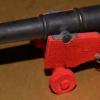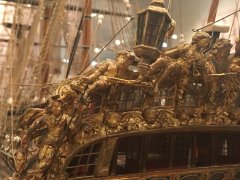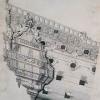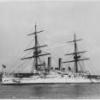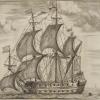MORE HANDBOOKS ARE ON THEIR WAY! We will let you know when they get here.
×
-
Posts
1,763 -
Joined
-
Last visited
Reputation Activity
-
 Mark P reacted to Jim Rogers in Whither goest thou, print magazine?
Mark P reacted to Jim Rogers in Whither goest thou, print magazine?
Sometimes people can't see the forest for the trees. I ran the Technical Documentation code for Navy Lightweight Torpedoes for 5 years. There was a major push to go completely digital and do away with printed manuals. All maintenance procedures would be put on iPad type devices. I fought this tooth and nail as it was and still is real short sighted. Ever try to read a iPad screen on the flight deck of a Destroyer during the day in the Arabian Gulf? Impossible. How about picking up that device with greasy hands. How about dropping it on the deck or over the side? A paper book survives all these scenarios. Going all digital in anything is a terrible idea even hobby magazines. But it is going to happen just because of cost in printing and shipping. The dollar always has the final say even over common sense.
.
-
 Mark P reacted to Jack12477 in Whither goest thou, print magazine?
Mark P reacted to Jack12477 in Whither goest thou, print magazine?
Ever try to read a digital manual and write notes in the margins of the pages ? Can't be done.
-
 Mark P got a reaction from thibaultron in Cut down / Razeed ships
Mark P got a reaction from thibaultron in Cut down / Razeed ships
Hi Shipman;
The first one to spring to mind is the Royal William, which never actually sailed as a three-decker, and was eventually cut down to a two-decker (I think with 80 guns)
Look her up.
All the best,
Mark P
-
 Mark P got a reaction from mtaylor in Cut down / Razeed ships
Mark P got a reaction from mtaylor in Cut down / Razeed ships
Hi Shipman;
The first one to spring to mind is the Royal William, which never actually sailed as a three-decker, and was eventually cut down to a two-decker (I think with 80 guns)
Look her up.
All the best,
Mark P
-
 Mark P got a reaction from Canute in Cut down / Razeed ships
Mark P got a reaction from Canute in Cut down / Razeed ships
Hi Shipman;
The first one to spring to mind is the Royal William, which never actually sailed as a three-decker, and was eventually cut down to a two-decker (I think with 80 guns)
Look her up.
All the best,
Mark P
-
 Mark P got a reaction from paulsutcliffe in Cut down / Razeed ships
Mark P got a reaction from paulsutcliffe in Cut down / Razeed ships
Hi Shipman;
The first one to spring to mind is the Royal William, which never actually sailed as a three-decker, and was eventually cut down to a two-decker (I think with 80 guns)
Look her up.
All the best,
Mark P
-
 Mark P got a reaction from daHeld73 in HMS Bellona 1760 by SJSoane - Scale 1:64 - English 74-gun - as designed
Mark P got a reaction from daHeld73 in HMS Bellona 1760 by SJSoane - Scale 1:64 - English 74-gun - as designed
Greetings everyone;
I have to agree with the comments about the view: I wish it was what I saw from the workshop!
Anyway, to end the digression: see below an extract from a contract for the building of the 74 gun ship Fortitude, dated 6th February 1778. A bit later than the Bellona, but I doubt that much had changed in the way of timber scantlings.
The third paragraph details what you need, but I have left the rest in for comparison also (your model is progressing admirably, and looks so beautiful!) Note that the black strake is exactly twice its thickness in height, and thinner than the wale by 1 3/4 ins. The plank on top is thinner by 1", with the planks diminishing up to the under side of the channel wale.
MAIN WALES: The Main Wales to be in breadth from upper edge to lower edge 4ft 4ins, and in thickness 8 ½ ins. To have one fair Seam in the Middle & the two lower & two upper Strakes to be lock’d into each other with Hook & Butt wrought of such lengths and the butts properly disposed so as to give the strongest Shift to the Ports & to each other.
THICK STUFF UNDER THE WALES: To have six Strakes of Thick stuff under the Main Wales, the upper edge of the upper Strake to be 6 ¾ ins in thickness, the lower edge of the 3rd to be 5 5/8 ins, & the lower edge of the sixth strake to be 4ins in thickness.
THICK STUFF UPON THE MAIN WALES: To have one Strake upon the Main Wales of 6 ¾ ins in thickness and 1ft 1 ½ ins broad. The lower edge of the Strake upon that to be 5 ¾ ins thick and to wear off to 4 ins thick at the Channel Wales.
CHANNEL WALES: The Channel Wales to be in 3 Strakes of 2ft 9ins broad on the perpendicular and of an equal thickness of 5 ½ ins. Properly shifted & to work down to make a proper Stop and afford Wood for the Port Hook
SHEER STRAKE: To have a Sheer Strake wrought that its upper edge may be agreeable to the upper edge of the Waste Rail in the Waste, and only one Inch higher from thence forward, and from the Waste Aft. To be in breadth 12ins and 4ins thick, & of English Plank in Wake of the Channels.
STUFF BETWEEN THE CHAN. WALE & SHEER STRAKE: The first Strake upon the Channel Wale to be in thickness 4ins, & the next under the Sheer Strake to be in thickness 3ins, & the intermediate Strakes to be diminished agreeable to the lower and upper edges of these two.
SHEER STRAKE: From the first drift forward & Aft to work one Strake of 3ins thick on the Sheer Strake, and the upper edge of the Strake under the Planshire (sic) from the Drift Aft to be diminished to the thickness of 2 ½ ins, which is to be dry English Plank.
Interesting stuff!
All the best,
Mark P
-
 Mark P got a reaction from Hubac's Historian in HMS Bellona 1760 by SJSoane - Scale 1:64 - English 74-gun - as designed
Mark P got a reaction from Hubac's Historian in HMS Bellona 1760 by SJSoane - Scale 1:64 - English 74-gun - as designed
Greetings everyone;
I have to agree with the comments about the view: I wish it was what I saw from the workshop!
Anyway, to end the digression: see below an extract from a contract for the building of the 74 gun ship Fortitude, dated 6th February 1778. A bit later than the Bellona, but I doubt that much had changed in the way of timber scantlings.
The third paragraph details what you need, but I have left the rest in for comparison also (your model is progressing admirably, and looks so beautiful!) Note that the black strake is exactly twice its thickness in height, and thinner than the wale by 1 3/4 ins. The plank on top is thinner by 1", with the planks diminishing up to the under side of the channel wale.
MAIN WALES: The Main Wales to be in breadth from upper edge to lower edge 4ft 4ins, and in thickness 8 ½ ins. To have one fair Seam in the Middle & the two lower & two upper Strakes to be lock’d into each other with Hook & Butt wrought of such lengths and the butts properly disposed so as to give the strongest Shift to the Ports & to each other.
THICK STUFF UNDER THE WALES: To have six Strakes of Thick stuff under the Main Wales, the upper edge of the upper Strake to be 6 ¾ ins in thickness, the lower edge of the 3rd to be 5 5/8 ins, & the lower edge of the sixth strake to be 4ins in thickness.
THICK STUFF UPON THE MAIN WALES: To have one Strake upon the Main Wales of 6 ¾ ins in thickness and 1ft 1 ½ ins broad. The lower edge of the Strake upon that to be 5 ¾ ins thick and to wear off to 4 ins thick at the Channel Wales.
CHANNEL WALES: The Channel Wales to be in 3 Strakes of 2ft 9ins broad on the perpendicular and of an equal thickness of 5 ½ ins. Properly shifted & to work down to make a proper Stop and afford Wood for the Port Hook
SHEER STRAKE: To have a Sheer Strake wrought that its upper edge may be agreeable to the upper edge of the Waste Rail in the Waste, and only one Inch higher from thence forward, and from the Waste Aft. To be in breadth 12ins and 4ins thick, & of English Plank in Wake of the Channels.
STUFF BETWEEN THE CHAN. WALE & SHEER STRAKE: The first Strake upon the Channel Wale to be in thickness 4ins, & the next under the Sheer Strake to be in thickness 3ins, & the intermediate Strakes to be diminished agreeable to the lower and upper edges of these two.
SHEER STRAKE: From the first drift forward & Aft to work one Strake of 3ins thick on the Sheer Strake, and the upper edge of the Strake under the Planshire (sic) from the Drift Aft to be diminished to the thickness of 2 ½ ins, which is to be dry English Plank.
Interesting stuff!
All the best,
Mark P
-
 Mark P got a reaction from druxey in HMS Bellona 1760 by SJSoane - Scale 1:64 - English 74-gun - as designed
Mark P got a reaction from druxey in HMS Bellona 1760 by SJSoane - Scale 1:64 - English 74-gun - as designed
Greetings everyone;
I have to agree with the comments about the view: I wish it was what I saw from the workshop!
Anyway, to end the digression: see below an extract from a contract for the building of the 74 gun ship Fortitude, dated 6th February 1778. A bit later than the Bellona, but I doubt that much had changed in the way of timber scantlings.
The third paragraph details what you need, but I have left the rest in for comparison also (your model is progressing admirably, and looks so beautiful!) Note that the black strake is exactly twice its thickness in height, and thinner than the wale by 1 3/4 ins. The plank on top is thinner by 1", with the planks diminishing up to the under side of the channel wale.
MAIN WALES: The Main Wales to be in breadth from upper edge to lower edge 4ft 4ins, and in thickness 8 ½ ins. To have one fair Seam in the Middle & the two lower & two upper Strakes to be lock’d into each other with Hook & Butt wrought of such lengths and the butts properly disposed so as to give the strongest Shift to the Ports & to each other.
THICK STUFF UNDER THE WALES: To have six Strakes of Thick stuff under the Main Wales, the upper edge of the upper Strake to be 6 ¾ ins in thickness, the lower edge of the 3rd to be 5 5/8 ins, & the lower edge of the sixth strake to be 4ins in thickness.
THICK STUFF UPON THE MAIN WALES: To have one Strake upon the Main Wales of 6 ¾ ins in thickness and 1ft 1 ½ ins broad. The lower edge of the Strake upon that to be 5 ¾ ins thick and to wear off to 4 ins thick at the Channel Wales.
CHANNEL WALES: The Channel Wales to be in 3 Strakes of 2ft 9ins broad on the perpendicular and of an equal thickness of 5 ½ ins. Properly shifted & to work down to make a proper Stop and afford Wood for the Port Hook
SHEER STRAKE: To have a Sheer Strake wrought that its upper edge may be agreeable to the upper edge of the Waste Rail in the Waste, and only one Inch higher from thence forward, and from the Waste Aft. To be in breadth 12ins and 4ins thick, & of English Plank in Wake of the Channels.
STUFF BETWEEN THE CHAN. WALE & SHEER STRAKE: The first Strake upon the Channel Wale to be in thickness 4ins, & the next under the Sheer Strake to be in thickness 3ins, & the intermediate Strakes to be diminished agreeable to the lower and upper edges of these two.
SHEER STRAKE: From the first drift forward & Aft to work one Strake of 3ins thick on the Sheer Strake, and the upper edge of the Strake under the Planshire (sic) from the Drift Aft to be diminished to the thickness of 2 ½ ins, which is to be dry English Plank.
Interesting stuff!
All the best,
Mark P
-
 Mark P got a reaction from mtaylor in HMS Bellona 1760 by SJSoane - Scale 1:64 - English 74-gun - as designed
Mark P got a reaction from mtaylor in HMS Bellona 1760 by SJSoane - Scale 1:64 - English 74-gun - as designed
Greetings everyone;
I have to agree with the comments about the view: I wish it was what I saw from the workshop!
Anyway, to end the digression: see below an extract from a contract for the building of the 74 gun ship Fortitude, dated 6th February 1778. A bit later than the Bellona, but I doubt that much had changed in the way of timber scantlings.
The third paragraph details what you need, but I have left the rest in for comparison also (your model is progressing admirably, and looks so beautiful!) Note that the black strake is exactly twice its thickness in height, and thinner than the wale by 1 3/4 ins. The plank on top is thinner by 1", with the planks diminishing up to the under side of the channel wale.
MAIN WALES: The Main Wales to be in breadth from upper edge to lower edge 4ft 4ins, and in thickness 8 ½ ins. To have one fair Seam in the Middle & the two lower & two upper Strakes to be lock’d into each other with Hook & Butt wrought of such lengths and the butts properly disposed so as to give the strongest Shift to the Ports & to each other.
THICK STUFF UNDER THE WALES: To have six Strakes of Thick stuff under the Main Wales, the upper edge of the upper Strake to be 6 ¾ ins in thickness, the lower edge of the 3rd to be 5 5/8 ins, & the lower edge of the sixth strake to be 4ins in thickness.
THICK STUFF UPON THE MAIN WALES: To have one Strake upon the Main Wales of 6 ¾ ins in thickness and 1ft 1 ½ ins broad. The lower edge of the Strake upon that to be 5 ¾ ins thick and to wear off to 4 ins thick at the Channel Wales.
CHANNEL WALES: The Channel Wales to be in 3 Strakes of 2ft 9ins broad on the perpendicular and of an equal thickness of 5 ½ ins. Properly shifted & to work down to make a proper Stop and afford Wood for the Port Hook
SHEER STRAKE: To have a Sheer Strake wrought that its upper edge may be agreeable to the upper edge of the Waste Rail in the Waste, and only one Inch higher from thence forward, and from the Waste Aft. To be in breadth 12ins and 4ins thick, & of English Plank in Wake of the Channels.
STUFF BETWEEN THE CHAN. WALE & SHEER STRAKE: The first Strake upon the Channel Wale to be in thickness 4ins, & the next under the Sheer Strake to be in thickness 3ins, & the intermediate Strakes to be diminished agreeable to the lower and upper edges of these two.
SHEER STRAKE: From the first drift forward & Aft to work one Strake of 3ins thick on the Sheer Strake, and the upper edge of the Strake under the Planshire (sic) from the Drift Aft to be diminished to the thickness of 2 ½ ins, which is to be dry English Plank.
Interesting stuff!
All the best,
Mark P
-
 Mark P reacted to SJSoane in HMS Bellona 1760 by SJSoane - Scale 1:64 - English 74-gun - as designed
Mark P reacted to SJSoane in HMS Bellona 1760 by SJSoane - Scale 1:64 - English 74-gun - as designed
Thanks, everyone, for your support. I was taken away from the shop for a few days, to rig up a hoist for kayaks--real rigging.
I am starting on the lower two strakes of the wales. I originally cut the foremost planks at the round of the bow according to my CAD drawing. But when I spiled to the strakes already installed, I discovered that the upper curve was much more dramatic than my original piece. The photo below shows the original piece at the top, and the card with the spiled edge below, showing the difference in curvature. In hindsight, I realize that I assumed the wales would be dead straight vertical, since they are so at midships; not so at the bow or stern! I made xerox copies of the spiled card for port and starboard. A couple of more pieces for the mistake box.
I had spent a great of time on the first two strakes sanding and filing the edges of the planks. I did this freehand with shaped sanding blocks. The challenge was to keep the edge square, or tapered slightly where needed to tighten up the joint. It was a little hit and miss. So I am trying a little jig shown below, which clamps into my jeweler's vise block. The two hold downs secure the plank, and then I can run the sanding block against the edge, keeping it exactly perpendicular. When I need to angle the edge, I will slip a thin spacer under one edge of the plank to change its angle to the table.
Mark
-
 Mark P reacted to Hubac's Historian in HMS Bellona 1760 by SJSoane - Scale 1:64 - English 74-gun - as designed
Mark P reacted to Hubac's Historian in HMS Bellona 1760 by SJSoane - Scale 1:64 - English 74-gun - as designed
Hey Mark - cool technique and interesting insight into the intricacies of keeping a closed joint around the bow. I’m still plastic-based, for now, so all of this is school-time for me. I’m loving this build, so far!
-
 Mark P got a reaction from Landlubber Mike in Greatest 74 gun ship
Mark P got a reaction from Landlubber Mike in Greatest 74 gun ship
Hi Sailor;
One factor which is generally agreed upon in contemporary assessments of British v French ships is that the French ones were built with smaller section timbers and less fastenings, such as bolts and knees. This was presumably because the French ships were not intended to remain constantly at sea, unlike their British counterparts.
When captured, it was normal for the dockyards to survey foreign vessels, and the report normally mentioned that she was in need of strengthening, which was frequently done.
It was also frequently found that captured French ships were so badly strained and worked by a few years sea-service that they were beyond economical repair, and were hulked or broken up.
All the best,
Mark P
-
 Mark P got a reaction from mtaylor in Greatest 74 gun ship
Mark P got a reaction from mtaylor in Greatest 74 gun ship
Hi Sailor;
One factor which is generally agreed upon in contemporary assessments of British v French ships is that the French ones were built with smaller section timbers and less fastenings, such as bolts and knees. This was presumably because the French ships were not intended to remain constantly at sea, unlike their British counterparts.
When captured, it was normal for the dockyards to survey foreign vessels, and the report normally mentioned that she was in need of strengthening, which was frequently done.
It was also frequently found that captured French ships were so badly strained and worked by a few years sea-service that they were beyond economical repair, and were hulked or broken up.
All the best,
Mark P
-
 Mark P got a reaction from coxswain in Greatest 74 gun ship
Mark P got a reaction from coxswain in Greatest 74 gun ship
Hi Sailor;
One factor which is generally agreed upon in contemporary assessments of British v French ships is that the French ones were built with smaller section timbers and less fastenings, such as bolts and knees. This was presumably because the French ships were not intended to remain constantly at sea, unlike their British counterparts.
When captured, it was normal for the dockyards to survey foreign vessels, and the report normally mentioned that she was in need of strengthening, which was frequently done.
It was also frequently found that captured French ships were so badly strained and worked by a few years sea-service that they were beyond economical repair, and were hulked or broken up.
All the best,
Mark P
-
 Mark P reacted to Vegaskip in terminology question - points off
Mark P reacted to Vegaskip in terminology question - points off
A very clever use of words. Remember Compass Rose was a 'Flower' Class Corvette.
Jim
-
 Mark P reacted to mgdawson in terminology question - points off
Mark P reacted to mgdawson in terminology question - points off
When i did my ticket the examiner got me to do it backwards, in half points !
Mark
-
 Mark P got a reaction from Canute in terminology question - points off
Mark P got a reaction from Canute in terminology question - points off
Hi everyone;
One point that some may not be aware of: the picture posted by Jud shows what is known as a 'Compass Rose'. This was the name of the (fictional?) corvette in Nicholas Monserrat's WW11 sea novel, and it wasn't until many years after I first read it that I realised what the name meant.
All the best,
Mark P
-
 Mark P got a reaction from mtaylor in terminology question - points off
Mark P got a reaction from mtaylor in terminology question - points off
Hi everyone;
One point that some may not be aware of: the picture posted by Jud shows what is known as a 'Compass Rose'. This was the name of the (fictional?) corvette in Nicholas Monserrat's WW11 sea novel, and it wasn't until many years after I first read it that I realised what the name meant.
All the best,
Mark P
-
 Mark P reacted to Kurt Johnson in Naval fiction, something different
Mark P reacted to Kurt Johnson in Naval fiction, something different
I recently found a fiction series that seems a little different from the majority that is available. The first book, which I'm reading right now is Britannia's Wolf, The Dawlish Chronicals, September 1877, written by Antoine Vanner. It reads pretty well. The first book is about a British naval officer on loan to the Ottoman Navy and it's conflict with the Russians in the late Victorian era. Kind of a change from the wooden walls, but not what would be considered a modern navy yet.
Kurt
-
 Mark P got a reaction from mtaylor in Gunport Stops - only mentioned by Steel 1805 - Identification ?
Mark P got a reaction from mtaylor in Gunport Stops - only mentioned by Steel 1805 - Identification ?
Hi Archnav;
Thank you for the info in extracting the pictures. I will give this a try and see what I achieve.
Don't worry too much about your English; the meaning is generally very clear. All those A+ weren't given for nothing!
One possibility for this big dead-eye is that it was used to repair a stay. As for being found at the aft end of the ship, this is not a reliable indication of where it started out. The ship was gradually broken up, and falling masts could have gone in a curve that took them and any dead-eyes far from their original positions. The action of waves would do the same thing; or even some of the previous attempts to salvage cannon or other useful items from the wreck.
All the best,
Mark P
-
 Mark P reacted to SJSoane in HMS Bellona 1760 by SJSoane - Scale 1:64 - English 74-gun - as designed
Mark P reacted to SJSoane in HMS Bellona 1760 by SJSoane - Scale 1:64 - English 74-gun - as designed
druxey, I truly married up, but not enough to share sharpened chisels. A ding in an edge could challenge the best marriage...
-
 Mark P reacted to archnav in Gunport Stops - only mentioned by Steel 1805 - Identification ?
Mark P reacted to archnav in Gunport Stops - only mentioned by Steel 1805 - Identification ?
Thank`s a lot Mark P !
In german forums, most of the members doesn`t speak english at all. So the cirlce of english speaking peope is very small. In addition, reading and understanding is very difficult, if not impossible for them. So much of their interpretation is false. No reproach, but a fact. But some of them do very well and are of much help to others.
Unfortunately, only a few have an extensive library, especially in English literature.
I am very thankful and happy to be here - I hope to contribute a lot more constructive posts here.
-
 Mark P got a reaction from Kris Avonts in Gunport Stops - only mentioned by Steel 1805 - Identification ?
Mark P got a reaction from Kris Avonts in Gunport Stops - only mentioned by Steel 1805 - Identification ?
Good Morning Gentlemen;
Thank you all for a very illuminating thread, which I have followed with great interest.
I believe that Archnav's original question has been answered by a combination of earlier replies, as shown below.
First I quote part of a post by Wayne, which is part of a very informative extract he posted from one of John Fincham's works.
Followed some time later by Archnav's posting of an extract from Brian Lavery's AOS book on Bellona.
The description from Fincham, quoted by Wayne, seems to me to fit perfectly with the illustration included in Archnav's post showing the Bellona's ports. Taken together, the two are clear in their meaning.
The port stops are formed by stopping the side planking slightly short of the actual port opening in the timbers, with the greatest width of exposed frame timber left at the bottom. This immediately creates a rebate, which will provide a good seal, and is easy to make.
The rebate in the ship's side is thereby formed without any additional work being required to produce it. Likewise, the corresponding rebate in the lid is formed by the inner planking (lining) of the port lid being narrower than the outer layer of the lid's planking. Again, no need to perform any extra task to create a rebate.
The ship's futtocks or toptimbers, and the port cills, are then left exposed to form the sides of the opening, and not covered in any way with any timber. The ship is planked; the port lid is made; and the two are put together when the lid is hung. Job done!
At no part of the process is any extra planking fixed to the sides of the opening to form a stop. If this was to be done, it would open up a real can of worms: is the regulation size of the ports, listed in so many Naval documents, to be taken to refer to the port size before these additional timbers are fixed, or after?
All the best,
Mark P
-
 Mark P got a reaction from trippwj in Gunport Stops - only mentioned by Steel 1805 - Identification ?
Mark P got a reaction from trippwj in Gunport Stops - only mentioned by Steel 1805 - Identification ?
Good Evening Wayne;
I have to disagree with you on that last bit. Scuppers were actually cut through the waterway in all the illustrations I remember, with the inner lead flange nailed to the waterway. The waterway did not cover the scuppers. Although I find it hard to believe that the report could miss something so seemingly obvious, given its level of detail, there is most definitely a strip of timber running along the junction of the deck and spirketting. This timber is not in the same plane as either of the adjacent areas of planking, and occupies the spot where a waterway would be.
Not to fit one flies in the face of everything ever written about this area of ship construction at this time. Look again at the picture no 30, with the corner of the standard cut away, and a length of timber running through it (remember the spirketting is at the bottom of the picture) Look at the picture no 25, which again shows a length of moulded timber at the junction of the spirketting and the deck planking (arrowed by Archnav) This timber is quite clearly not shown on the coloured drawing of the excavation.
All the best,
Mark P


